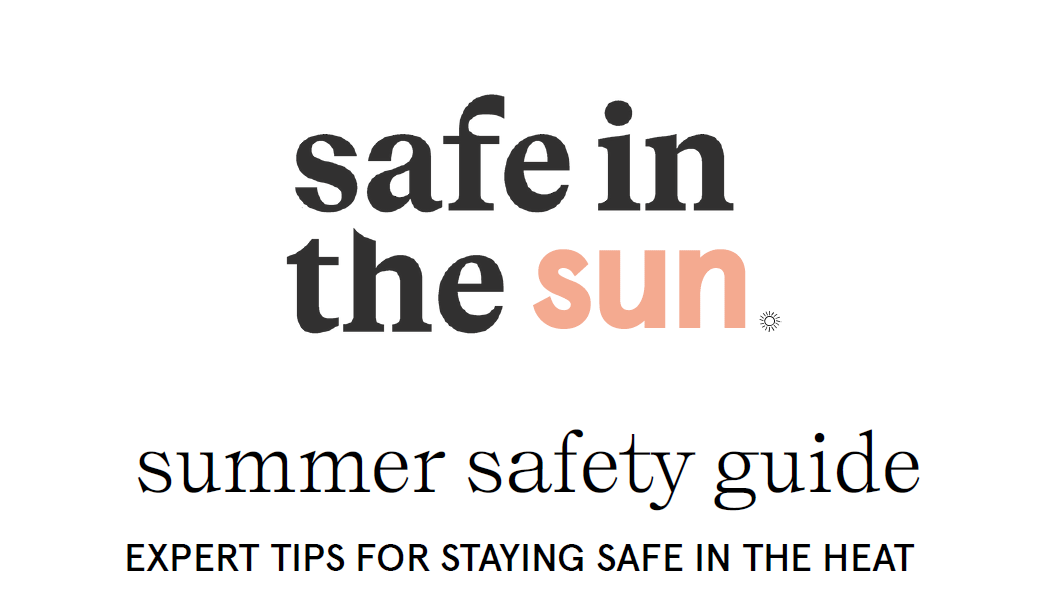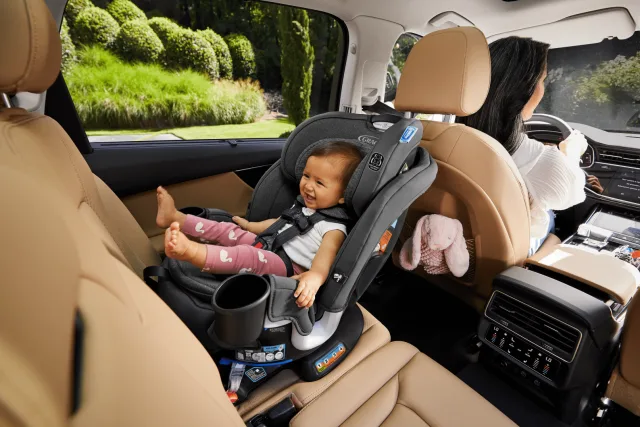Summer is such a special time for families! The grind of the usual daily routine is finally over no more bussing kids all over, no more homework, no more dreary weather, and no more rushed mornings. It’s a chance to slow down and soak up the sunshine.
Whether you’re spending the afternoon at the pool or going on a long road trip, summer presents so many new opportunities to make memories. But, for those memories to be good ones, safety is essential! And the truth is, summer activities can bring a lot of added danger to your daily life! Knowing how to beat the heat is key for a summer that’s both safe and fun!
So today, we’re sharing a roundup of essential safety tips your family should know before heading out to enjoy whatever adventures the sunny day brings. Here’s what to keep in mind:
Summertime Safety Tips for Families
Some Things To Know About Summertime Safety
Water Safety Tips
Supervise children near any water and designate a water watcher.
We should never expect a child to know how to stay safe while around any body of water. An adult should be actively watching the kids at all times staying focused on the water without any distractions.
Use Coast Guard-approved life jackets but skip arm floaties.
When a life jacket is needed (not always at the pool, but in any body of water where the bottom isn’t visible), ensure it’s Coast Guard approved. Make sure these are the vest style and avoid arm floaties or Puddle Jumpers, as they can promote poor swim habits.
Put your kids in consistent swim lessons.
Formal swimming lessons can reduce a child’s risk of drowning by 88%! Enroll your children in swimming lessons as early as you can.
Set clear rules around the water.
Children have a strict set of rules around water that they know by heart. Take time to teach them these helpful safety rules:
- No running
- Wait for permission before entering the water
- No breath-holding games
- No pushing, dunking, or rough play
- Stay away from pool drains and filters
- Get in and out of the water safely
Install barriers around home pools.
Use fences, alarms, and self-latching gates to prevent unsupervised access to pools. You can never be too cautious!
Always check water conditions before swimming.
Before entering any body of water, assess the conditions before swimming. Strong currents, wildlife hazards, or other factors could make you think twice before swimming.
Stay out of the water during storms.
If you see lightning or hear thunder, it’s time to get out of the water.
Learn to identify the signs of drowning.
Drowning is often silent and quick not like what you see in the movies. Look for stillness in the water, a vertical body position, gasping, and erratic arm movements.
Recoat broad-spectrum sunscreen every 30 minutes.
Water can significantly reduce the effectiveness of sunscreen. So, recoat every 30 minutes to ensure no one gets a sunburn!
Use designated swim diapers for toddlers and babies.
Regular diapers aren’t water-safe. They also do a terrible job holding in fecal incidents! Use swim diapers to avoid accidents in pools.
Always empty kiddie pools and buckets after use.
Standing water can be a big health risk. Plus, it attracts insects and furthers the risk of drowning, so always dump those kiddie pools when you’re done.
Get CPR certified.
Knowing CPR can save a life in the critical minutes before emergency services arrive.
Choose neon swimsuits and swim gear.
It’s best to avoid putting kids in light-colored swimsuits. Bright, high-visibility colors like neon pink, orange, or yellow make it easier to spot a swimmer quickly especially in open water or crowded pools. This visibility can be critical in an emergency when every second counts. Here’s more on the best swimsuit colors for kids.
Click here to see our Pool & Beach recomendations.
Boat Safety Tips
Always tell someone when you’ll be out on the boat.
You never know when your summer fun will take a quick turn. Always share your float plan with someone trusted in case of an emergency.
Ensure your boat is equipped with safety essentials.
Have life jackets, fire extinguishers, a whistle, flares, first aid, and a working radio on board.
Check the forecast before going out.
It’s best to wait for near-perfect weather conditions before going out on the boat. Check the forecast and stay back if there will be storms, rough winds, or anything else that might rock the boat. (Get it?)
Always wear a Coast Guard-approved life jacket, even adults.
Everyone on board should be wearing a life vest regardless of their swimming ability.
Keep everyone seated while the boat is in motion.
Sudden stops or waves can cause falls or overboard accidents. Keep everyone seated while the boat is moving.
Turn off the engine when people are getting in and out of the boat.
Whether stopping to pick up a wakeboarder or taking a break to swim in the middle of the water, always confirm the engine is off. This prevents propeller injuries and other serious accidents.
Never overload the boat.
Exceeding capacity can cause the boat to capsize or become unstable.
Install carbon monoxide detectors.
Did you know carbon monoxide is a risk even outside? It’s true especially on boats. Because of that, keep a detector on board.
Use a kill switch lanyard.
Confirm you or the person driving has a kill switch ladder that will cut power if the driver falls overboard. Otherwise, runaway boats are really dangerous.
Follow all local boating laws.
Know and follow your state’s rules about speed, zones, and alcohol use on the water.
Use a spotter when doing water sports.
A second person should watch swimmers, tubers, or skiers while the driver focuses on the boat.
Ensure your children know boating hand signals.
If your kids are doing water sports on the boat, ensure they know these hand signals:
- Stop
- Faster
- Turn
- I’m Okay

Summer Weather Safety Tips
Apply sunscreen every 2 hours.
To prevent skin cancer and keep your skin looking young, re-apply every 2 hours. You should even do this on cloudy days or when you’re spending time in the shade.
Have a sun protection plan for babies under 6 months.
Babies should not wear sunscreen until they are about six months old. So, until then, use UPF clothing and hats.
Don’t put blankets or covers over car seats.
This traps heat and increases the risk of overheating as their body temperature rises use approved sun shades instead.
Consider sun-protective clothing, too.
Babies aren’t the only ones that should dress for safety this summer. Wear a hat, eye protection, and UPF clothes.
Keep everyone hydrated when outside.
Encourage frequent water breaks, even if no one feels thirsty. They’ll probably drink water even if they say that otherwise, helping them with staying hydrated.
Never leave kids or pets in a parked car.
Even with windows cracked, temperatures can rise to deadly levels in minutes. Just don’t do it! Here’s more on preventing hot car deaths.
Know the signs of heat exhaustion.
Watch for dizziness, nausea, heavy sweating, or fatigue move to shade and hydrate immediately. Heat stroke and heat exhaustion are all too common.
Make sure the cool air reaches the back seat.
Even with AC, the air may not be getting all the way to the back seat. Test it out and get a Noggle if necessary. If you want a longer breakdown, here’s a post on prepping the car for warmer months.
Never shelter under a tree.
Trees attract lightning and can drop heavy branches during storms.
Have a plan on where to shelter when camping.
Identify sturdy shelters or storm-safe areas in case of severe weather.
Never drive through flood waters.
Just 6 inches of water can stall a car; 12 inches can carry it away. Do not drive in through floodwaters, ever!
See more summer safety products here.
Outdoor Summer Safety Tips
Check for ticks after every outing.
When doing an outdoor activity, your child may encounter a tick. If this happens, remove it immediately with fine-tipped tweezers. Ticks can carry Lyme disease, so acting quickly is essential!
Wear helmets when biking, skating, or scootering.
Head injuries are serious and preventable with proper gear.
Establish the buddy system with your kids.
Kids should stay in pairs when outside or exploring, even in familiar areas.
Teach your kids about stranger safety.
Remind your children never to go anywhere with anyone, even someone they know, without permission from a parent or trusted adult. Practice scenarios with them so they feel confident saying “no” and seeking help when something doesn’t feel right.
Avoid unfamiliar animals and pets.
Remind children that not all animals (even dogs and cats) are friendly. Teach them to keep their distance and wave instead of rushing to them.
Use insect repellent.
Bugs can not only be irritating, but some of them can also carry diseases. Use bug spray and make a plan for if an insect stings you.
Learn to identify common dangerous plants.
Poison ivy, oak, and sumac can cause rashes and allergic reactions. But, there are plants like lilies and azaleas that are harmful to pets if ingested. Keep an eye out for those, too!
Be cautious of trampolines.
Trampolines are one of the main culprits of summertime injuries. If your kids are using a trampoline, be extra vigilant to ensure they’re jumping safely that means close supervision, one jumper at a time, and proper safety netting. When possible, it’s safest to skip the trampoline altogether.
Never leave a grill unattended.
A grill can ignite in a moment and you never know when kids may get curious. about the grill, so Always stay close and keep a watchful eye when grilling to prevent accidents!
Fully extinguish fires before leaving them.
If you’re having a fire pit, ensure it’s completely extinguished before walking away from it or going to bed. Even the smallest spark can turn into a big fire in a matter of minutes.
Go to public fireworks shows instead of using them at home.
Fireworks are another one of those common causes of injury in kids. It’s best (and safer) to leave them to the professionals! And honestly, public shows are often more impressive anyway.
Summer Road Trip Safety Tips
Get a pre-trip vehicle check-up.
It’s so important to prepare your car for a road trip! Check tires, brakes, fluids, and lights before hitting the road. Here’s more on how to prepare your car for a road
Update your roadside emergency kit.
Think about your car emergency kit. Are there clothes for the kids that no longer fit? Are you long out of motion sickness bags? Take time to restock and take inventory of what’s in there. Here’s our list of road trip essentials to get you started.
See if any car seats need to be adjusted.
Kids go grow so fast! When was the last time you checked the car seat’s recline, headrest height, and strap placement? Take this as an opportunity to get the car seats perfectly installed and ready for buckling.
Take breaks every 2 hours.
Take regular breaks to stretch legs, go to the bathroom, and avoid drowsy driving.
Be mindful of what snacks you choose.
For snacks, avoid choking hazards and limit messy, high-sugar options.
Check the weather before you go.
Always make sure you check the weather for any severe conditions that may cause delays.
Communicate your travel plan to someone else.
Always let someone know where you're going and when you expect to arrive. That way, they can check in and make sure everything went as planned.
Avoid distracted driving.
Remove common distractions on the road to keep focused on driving.
Use crates, carriers, and pet seat belts in the car.
In a crash, anything loose and heavy can become a dangerous projectile. That includes pets, so ensure you’re boarding your dogs safely.

Have the best (and safest) summer ever!
With just a little planning and a few precautions, your family can enjoy all the fun summer has to offer without the stress. Keep these tips in mind, stay aware, and focus on making memories you’ll actually want to remember! And, for more essential safety info, check out the Safe in the Seat blog, such as Summer Safety Tips for Kids. We’ve got everything you need to keep your family safe!
As an Amazon Associate, Safe in the Seat earns from qualifying purchases.






